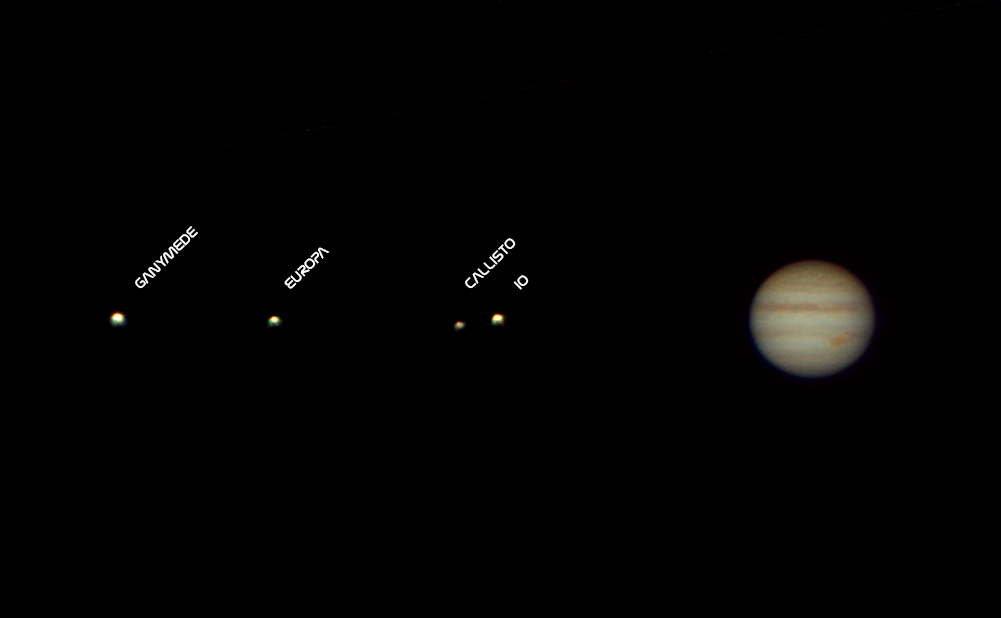
Jupiter and it's 4 Moons
[Public Domain] 17 Jan 2015 Dylan O'Donnell
CATEGORY : Astrophotography
8,998 others viewed this post.
This is my first attempt at planetary astrophotography aside from the lunar stuff, which is a very similar approach but with a much brighter, bigger target. Compared to photographing nebula, which takes hours or days, planetary imaging takes mere moments. This image is a processed stack (Autostakkert) from about 400 frames (40 seconds of video) taken with a Canon 70D DSLR camera (5x digital zoom) through a Celestron 9.25″ SCT.
The image is a composite of two exposures in order to see the moons as well. Although the moons sit in a straight line around the planet, the orbits aren’t perfectly aligned and you can see the small “dip” from Callisto compared to the others.
With better seeing and barlow multiplier lenses I should be able to create better, more detailed images of the planets with this DSLR video method, although specialised web cameras or CCDs tend to get better results.
Jupiters significance is sometimes understated in common conceptions. It is understood that life on earth would simply not be possible without Jupiter’s gravitational mass protecting us from destruction by vacuuming space of dangerous asteroids that would have otherwise smashed us to smithereens.
 Download Full Resolution (1001x618) 44KB
Download Full Resolution (1001x618) 44KB






































